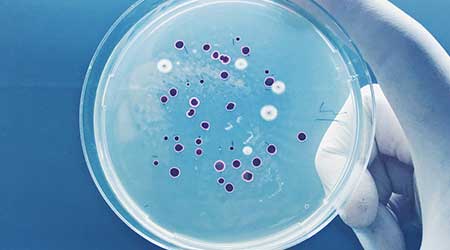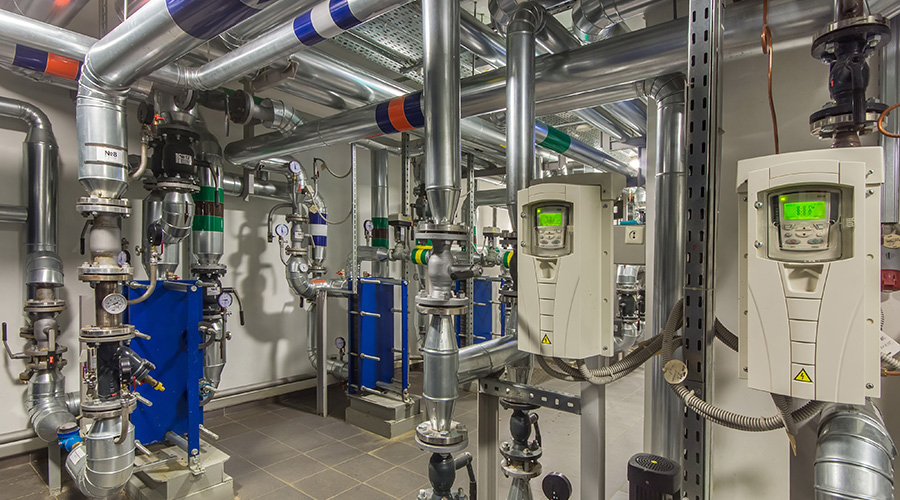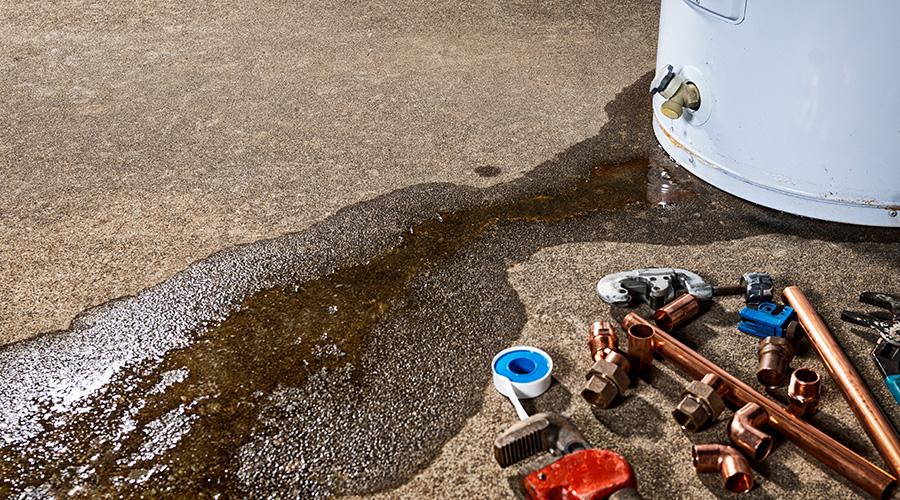Germicidal Ambient Lighting Has Potential But Caution Is Warranted
Given the growing challenges our world faces with respect to antibiotic resistance, the evolution of germicidal lighting is occurring at the right time.
The use of UV light (between a wavelength of 10nm and 400nm) in HVAC systems at the cooling coils, drain pans, etc., to prevent the growth of mold and harmful bacteria is common practice. And some facilities, such as hospitals, use portable UV lighting units at these lower wavelengths to disinfect whole spaces. This is done during unoccupied conditions because UV light is harmful to humans, though the specifics depend on which part of the spectrum is being used, the duration of exposure, and what specific health impacts are being considered (i.e., skin cancer, cataracts, immune system disorders, etc.).
Now several manufacturers are producing ambient germicidal luminaires/systems using the lower end of the visible spectrum (violet and blue light) to provide disinfecting capabilities in both occupied and unoccupied conditions. Given the growing challenges our world faces with respect to antibiotic resistance, the spread of infectious diseases, and food contamination, all of which will be exacerbated by climate change, this evolution of germicidal lighting is occurring at the right time.
The technology makes use of wavelengths within the 400nm – 450nm (“blue light”) visible spectrum range to disinfect and kill bacteria. This narrow germicidal range may be blended with overall white light to function as the primary source of ambient light, or it may be employed alone in fixtures at a higher output during unoccupied conditions, such as overnight, to maximize disinfection. Or both modes may be incorporated into a single luminaire. Some manufacturers are also marketing these luminaires for use outside of more specialized settings, like hospital surgical suites or cleanrooms, to a wider array of space types, ranging from school classrooms and daycare to hospitality settings and dormitory rooms.
While such luminaires do offer benefits, there is the possibility that their widespread deployment could have unintended health consequences. It could create environments misaligned with human physiological needs. Specific issues that require additional research include the potential development of tolerant or resistant bacteria, potential negative impacts on bacteria outside of the human body, and potential negative impacts on human physiology.
Effectiveness as a Germicidal Agent
Ambient luminaires using blue light can function as a disinfectant. However, germicidal effectiveness depends on the microbial levels present, the types of bacteria present, and the specific environmental context, including the specific blue light wavelengths used, their intensity, and the time of exposure. It's also important to note that such systems will not achieve complete disinfection by themselves (though that isn’t necessarily the desired outcome). The research to date has also generally consisted of controlled laboratory experiments and clinical applications.
The research makes it clear that more investigation is needed to obtain a better understanding of how different contextual interactions of these variables impact the effectiveness of blue light as a disinfectant. William Hanage, an epidemiologist, questioned if it makes sense to perform such sterilization in wide-ranging settings. He suggested that the current practice of using portable UV lighting units or similar functioning devices to disinfect key rooms or specific surfaces in the absence of people may be the better option. While these spaces or surfaces would become contaminated the next day as soon as they were used again, it would still minimize the proliferation of pathogenic bacteria and the potential for human infection. However, limited applications of blue light luminaires in clinical applications do offer the promise of helping extend how long existing antibiotics will remain viable tools.
Related Topics:













